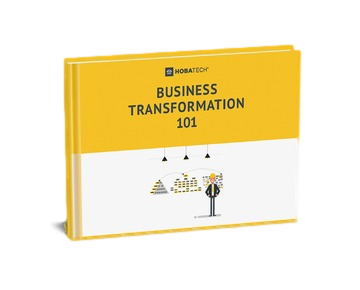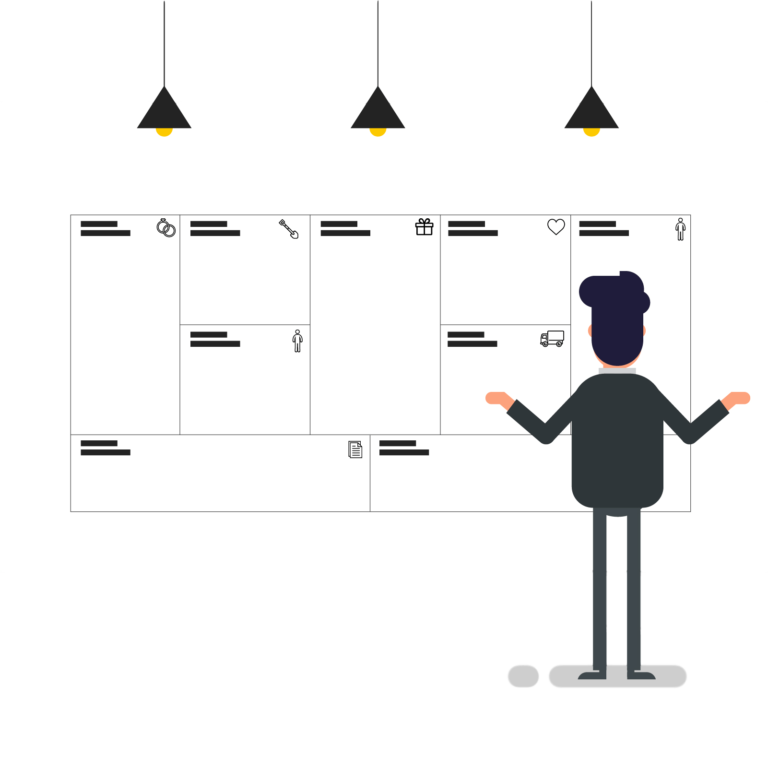In the blog post “Business Transformation Lessons from COVID-19: The Good, The Bad, and The Unknown”,
HOBA Tech explores the impact of the COVID-19 pandemic on business transformation.
The post discusses how the pandemic has accelerated the need for organisations to adapt and embrace new ways of working, including remote work.
It also highlights the challenges businesses face in maintaining effective strategies amidst the sudden and impactful nature of the pandemic.
The post further emphasizes the role of the HOBA (House of Business Architecture) framework in helping businesses navigate these challenging times and the importance of focusing on effective marketing and consumer needs in the changed corporate landscape.
Heres what we’ll cover (click the links to skip to the section below):
NB – Click to expand images 📸
Table of Contents
The Good
Human beings are a complex form of species that can’t be categorized into general categories with simplicity. While a renowned quote says that ‘it’s not the most intelligent, or the strongest but the one that is able to adapt to change the best who survives, COVID-19 has thrown the world into a massive state of change that will and has tested everyone.
A scientific study proves that humans possess massive fears of change and have to struggle through their basic operations while experiencing undue stress and anxiety in their environment.
However, during this global pandemic, many of us soon realized that anticipating and accepting change was the only way to squeeze through these crunch business situations and survive through it.
The Business Transformators around the world are acknowledged and appreciated for their specialization in their domain and their timely strategies. However, due to COVID many of them might need to alter their approaches. To get a head-start, they should start from here.
Let’s have a look at the positive lessons we learned from this global disease.

6-Steps to Business Transformation Success
WHAT THE TOP 30% OF ORGANISATIONS KNOW THAT YOU DON’T 👉

💡 COVID-19 has struck the world so instantaneously, giving us no time to plan or measure the repercussions of our decisions. Even the most experienced and successful businesses are now finding it difficult to maintain healthy strategies to deal with the pandemic. 😷🌍 #COVID19 #BusinessChallenges 💼🌟
Heath Gascoigne Tweet
Digital Transformation
With the start of 2020, the business environment had made it clear that Digital Transformation is essential for businesses worldwide. Now with the massive disruption of COVID-19 in the business world, the importance of Digital Transformation has intensified into a prominent position.
Digital Transformation is a revolutionary process that many companies had pre-COVID aspired to start their transformation journey, but for one reason or another faced enormous difficulties while also running their Business As Usual (BAU) activities. However, COVID-19 has forced many companies to implement these changes‘by hook or by crook’ in order to survive the current situation and stand-out from their competition.
The first and foremost consideration with respect to digital transformation is cyber security and how to implement and maintain robust security protocols to ensure the security of the company’s operations, and most importantly company and customer data.
The companies that are providing cyber security services (not to mention video conferencing) have been enjoying the recent change, as they have managed to secure a handful of new clients that require constant security support and updated remote secure mechanisms.
Furthermore, as Work-From-Home (WFH) became the new IT industry reality, many companies had to adopt different remote-based project management and collaboration services that to continue to work collaboratively with colleagues and co-workers, but this time, remotely without physical presence or a physical office to perform every day tasks.
A major component of Digital Transformation, WFH and working remotely has been the heavily dependency on the usage of cloud technologies. However, companies need to implement proper backup mechanisms to ensure that they are not exposed to any kinds of data loss situations in the process of going digital.
If you are still confused on how to implement the digital transformation framework in your company, you might want to visit my detailed analysis on Anti-Crisis Transformation.

💡 Now with COVID-19 changing the entire corporate landscape, focus your efforts on effective marketing and satisfying consumer needs. Improvise on your products and reach out to them. These steps will collectively address the short term and long term goals, ensuring a smooth transformation whilst eliminating any obstacles along the way. 🔄🎯 #COVID19 #BusinessTransformation💼🌟
Heath Gascoigne Tweet
Paper Processes are Obsolete
To appreciate an environment-friendly approach, the debate of giving up on paper-based official processes has been around for quite some time. However, during this period of economic lockdown and change, companies have experienced the forced benefits themselves first-hand.
Due to the initiation of WFH in majority of the companies, the daily paper-based document requirement had been debunked as redundant and unimportant. Owing to remote working, companies switched to services such as E-signatures and different mediums of communication to interact with the employees, including agreeing ways-of-working based on expected speed to receive and respond, and importance – some opting for traditional email (24hr turnaround), Skype (intra-day) or mobile and voice message (instantly or within 1-2 hours).
Furthermore, the element of security also supported the process of going paper-less, as it is better to have a systematic and fool-proof security practice to record the sensitive company and customer information instead of relying on filing cabinets, or stored on a single employees laptop and not an a protected shared company drive the team has visibility of and can access.
You can find more about the advantages of going paperless here.
Understanding the Significance of Executing the Agile Development Methodology
In the IT industry, there have been numerous debates regarding the effectiveness of development models that suit different organisational structures. While the Agile methodology hasn’t always been a number one choice, COVID-19 has shown that the agile approach might be the most appropriate methodology to manage your tasks with ease.
The agile approach primarily focuses on the business’s flexibility and ability to adapt to the changing environment. Consumer satisfaction is achievable by implementing a quick-delivery mechanism that allows the consumer to receive instant feedbacks for their reservations regarding the development mechanism.
For instance, businesses offering 3d printing services leveraged the opportunity and turned to making masks. Their swift approach is the reason why they were able to continue their operations during these uncertain times. Grocery vendors around the globe have started channeling their efforts online to reach out to their target market.
Furthermore, the agile methodology emphasizes the importance of collaboration of different teams to ensure that everybody is on the same page and is focused on implementing a unified outcome without any confusion.
Lastly, the core principal of the agile approach is to channel its focus towards quality, not quantity.
The Bad
The adaptability and sustainability towards change is not everybody’s forte. This was effectively highlighted in the recent business situations. In order to support the struggling businesses with their strategies, I put together a detailed guide on the Do’s and Don’ts of Organisation Transformation.
Business Transformation is a systematic and highly strategic process that requires efficient mentorship and guidelines to be implemented successfully. However, people fail to understand and comprehend the appropriate strategies, which result in their failures.
Let’s have a look at the negative lessons we learned from this global pandemic that shouldn’t be practiced by others.
Manual and On-Premise Solutions are No Longer Sustainable
Excessive Dependence on Technology
The first and foremost disadvantage of going paperless for an organization is the increased amount of staying dependent on technology. The users have to be in constant connection with their laptop/desktop and they are at the mercy of the machine in order to perform even the slightest of tasks.
In case of a malfunction, there is a high probability of a dip in the productivity level of a worker. Sure, backups can come in handy, but when time is of the most importance, fetching common results from data backup can feel like a daunting and rigorous task.
Moreover, the dependence on cloud is also extremely volatile due to the lack of stability of your internet connection and other server-related issues that could arise.
Rejecting the Agile Methodology
As mentioned earlier, there are multiple development methodologies and the debate of which is the best has been around for quite some time. However, the use of an inappropriate development methodology only affects the company using it.
Being under the false influence that the agile approach is ineffective and faulty, many businesses had to face dead-ends in their development cycles due to inappropriate mechanisms. Failing to adapt or evolve with the changing times only leads to more failure.
Since WFH is being implemented in majority of the organisations, collaborative style of working is the only viable option to ensure that the goals are being met with accuracy.
However, businesses that neglected the importance of collaboration and followed their conventional communicational mediums had to witness substantial losses in meeting their deadlines due to an increased amount of inaccuracies in communication.
Lack of Flexibility in the Business Model
Disaster Recovery and Business Continuity Planning proved its value. Achieving flexibility in a business model is not easy. However, it signifies its importance when the situation forces you to pivot and change your point of focus and new direction. For instance, companies with just a B2B model would encountera number of issues and loss in clients as the corporate clients initiated WFH worldwide. Now, if these same companies had a B2C strategy up its sleeve, they could have switched its resources towards providing B2C services to individuals who are staying at home practicing WFH, if their business model was setup that was to adapt that quick.
The Unknown
Although we are rigorously planning and devising multiple strategies as backups to restart and/or resume our business operations, in actuality, we are unaware of the future and how will the business world will unfold in a post-COVID environment.
However, we can prepare a little better by strengthening the following factors.
Is the Vision Still Relevant?
A company is only as good and strong as the strength of its vision. As the businesses are beginning to resume their operations, they should analyze the shifts that need to be made in the company’s visions, update them (if necessary), and run them by the employees to ensure that the employees can feel the same zeal again.
What is the State of Your Current Operating Model?
Is your current operating model feasible for your business? How different is it from before? Are you satisfied with the change or do you intend to shift back to the conventional operating mechanism as soon as the situation allows?
Ask these questions and find answers. The business paradigms are shifting and the definition of normal is entirely different than it used to be before the start of 2020. Now, your normal is what suits your business needs.
Re-identify the Pain Points of Your Customers
With the changes in your operational structure, there will be some direct and indirect effects on the customers. Moreover, due to the inaccessibility of services that were available before, the pain points of the customers have changed considerably by now.
Perform a detailed analysis via surveys/polls to figure out the change in the customer expectations and strive to implement and satisfy your customers.
How Can You Achieve Your Target Operating Model?
The easiest way to achieve your Target Operating Model (TOM) is to reassess the needs of your customers and develop the necessary changes to satisfy them. While you’re at it, you also need to identify whether or not you possess the capabilities or internal talent to drive the change.
Consider COVID-19 to be just a quick trailer into what can happen. Leverage this opportunity to learn and start developing the change capabilities internally to survive any unexpected situations that may arise later on. If you want to train your team or company using the agile business transformation method already used to rescue some of the largest transformation projects in the UK, check out our training here.
Conclusion
To conclude, I would like to reiterate the key points. It is an undeniable reality that COVID-19 hit most of us when we were least prepared. Due to the lack of preparation, businesses had to make educated decisions according to their best judgments to initiate a sustainable and effective business strategy for their companies. The most important factors to survive through this crucial period are:
- Initiating and welcoming the effects of Digital Transformation throughout the company and allowing your employees to get comfortable around the new environment.
- Realizing that going paperless is not a concept of future anymore and is implementable with an appropriate set of measures.
- Implementing the agile approach might possess and drive substantial positive outcomes for the company.
The COVID-19 pandemic has undeniably accelerated the future of work, pushing businesses to adapt swiftly and embrace new ways of working.
The crisis has highlighted the importance of agility and adaptability in business transformation. Organizations are urged to embrace technology, remote working, and digital advancements to navigate through these challenging times.
Enterprise architecture frameworks, such as HOBA Tech’s HOBA (House of Business Architecture), play a crucial role in guiding organizations through the complex process of aligning business strategies with IT infrastructure.
The HOBA framework has been successfully used by numerous companies, including the UK Government and FTSE-100, to navigate their transformation.
As we move forward, the focus should be on effective marketing and satisfying consumer needs to ensure a smooth transformation while eliminating obstacles along the way.
The pandemic has pushed societies to an inflection point where embracing technology is no longer an option but a necessity.
To learn more about how HOBA Tech can assist your organization in navigating business transformation, visit our website or contact us to discuss how we can help.
Hope you find that useful. If you did, let me know in the comments below what you like and would like to see next, and share this with anyone you think would benefit from it!
Ready to take the next step? Explore our plans and pricing here and embark on a transformative journey with HOBA today.
Together, let’s unlock the potential of your business and pave the way for a future of sustainable growth and innovation.
Thank you for reading this!
Sincerely,

Heath Gascoigne
P.S. If you want to join our Business Transformator community of 2,000+ like-minded Business Transformators, join the community on the Business Transformator Facebook Group here.
P.P.S. If you want to learn more about business transformation, check out The Business Transformation Playbook here.
For more information, visit https://www.hoba.tech













